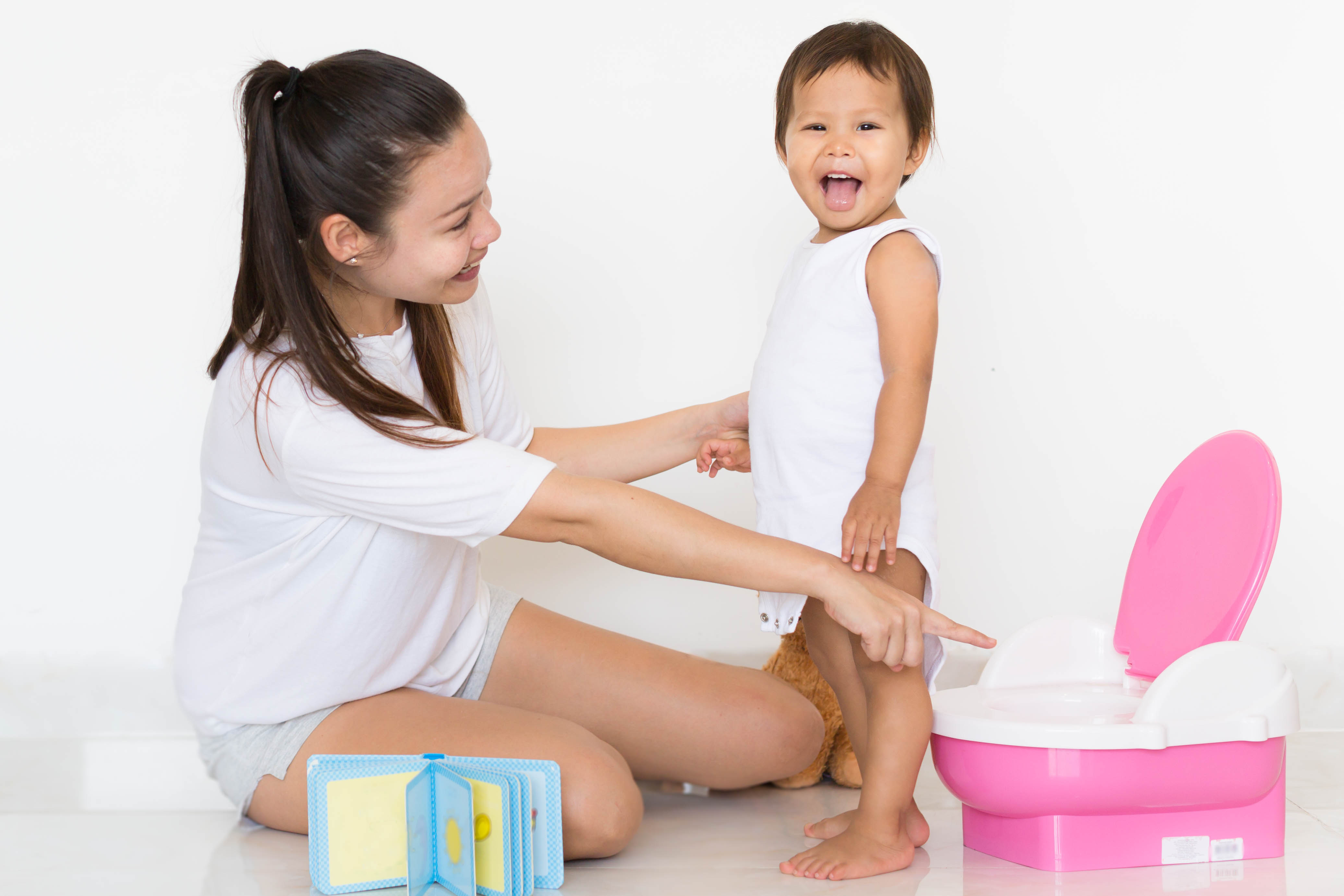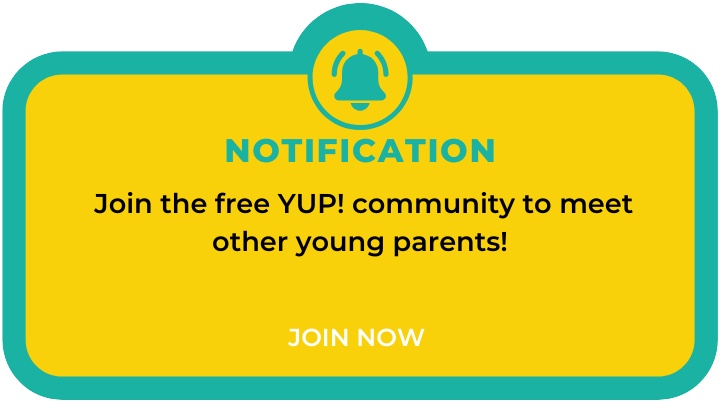Potty Training 101

Many parents anxiously await the days when they will be able to ditch the expense of diapers and teach their little ones how to use the potty. Even though the child may be ready, many parents don’t actually know where or even how to begin potty training. Learning to use the toilet can be different for each family and even for each child within a family. Difficulties can be due to schedule changes, a child's readiness or lack thereof and lack of knowledge around what approach will work for your child. You might’ve been told that your little one is ready to potty train when they have started to show interest in the toilet, can undress themselves, or follow simple instructions. It is important to understand the different potty training approaches and to figure out which one will work best for your child(ren). Also, know that this journey can look differently for each family and child.
When should you begin?
Many parents wait for their children to “show signs'' that they are ready to be potty trained. Some of these signs include: being able to go long periods of time with a dry diaper, able to follow directions, take their clothes on and off, and communicate when they need to go. The American Academy of Pediatrics suggests that children will be equipped to be potty trained between the ages of 22-24 months of age, however in some cases children potty train a little later. This is due to developmental, biological and emotional readiness that is exhibited by this age. Potty training is a skill that includes behavioral and physiological processes and for that reason it can be a very complex skill for children to learn. The fact of the matter is that “when” you should begin potty training really varies depending on your individual family. Some children will show signs that they are ready early on and other children will not show signs at all. Both of these scenarios are variations of “normal” and we should remember that every child’s potty training journey will look differently.
When deciding to start potty training here are a few things that should be remembered:
- Try to make sure that you have no major life or schedule changes coming up like vacations, extended periods of time outside of the home or inconsistent routine which could confuse or stress your child out during this transition.
- Make sure you are able to commit to potty training which might mean staying home for several days at a time and having a clear schedule.
- Evaluate if you feel confident in your knowledge, patience and ability to begin potty training at that time.
- Make sure you are stocked with potty training essentials such as pee pads, a toddler friendly potty or seat, training underwear, extra wipes and potty training books/educational material.
Most Common Approaches
Child Oriented Approach
This approach specifically observes the readiness signs in your individual child and follows their lead for when you start the potty training process. Readiness signs include interest in the bathroom, taking their clothes on and off, keeping a diaper dry for an extended period of time. Once a child expresses interest, parents will then follow a series of steps to train the child. The steps are:
Step 1: Child meets the potty and sits on it, fully clothed
Step 2: Child sits on the potty with pants and diapers off and is praised and encouraged. Some experts suggest not encouraging or praising the child too much which can cause nervousness and pressure.’
Step 3: Child is put on the potty after they soil their diaper and the contents of the diaper are emptied into the potty. While parents empty the diaper into the potty they use this time to explain that pee and poop go in the potty.
Step 4: Child goes diaperless for short periods of time and is encouraged to use the potty independently.
Three Day Approach
This approach is exactly how it sounds! Parents using this approach clear their entire schedule for three days. In these three days the child goes completely naked for the first full day and is usually given a good amount of fluids to help with the urge and sensation to pee. Over the course of the next two days the child is introduced to underwear and then bottoms. Then, the child is regularly placed on the potty every few minutes and encouraged to use the potty. This approach focuses on connecting the dots of the sensation of peeing and pooping to the urge of having to use the potty. The outcome of this approach is that over time the child will be able to understand their body and the urge to use the potty.
Self Potty Training Approach
In this approach parents will wait until their child expresses interest in using the potty. Common signs of interest can include pulling their pants down, undressing, wanting to sit on the potty or wanting to be in the bathroom. The assumption is that a child will essentially “train themselves” from being self motivated and mimicking their parents, siblings or peers by using the potty. In this approach you will set up opportunities throughout a child’s day to encourage them to use the potty. For example, before or after a meal, before leaving the house, before bed, etc.
Gradual, Parent-led Toilet Training Approach
This approach combines several potty training techniques from other methods. Specifically, this method is focused on planning ahead and preparing your child before beginning the actual process of potty training. Parents who use this approach will often let their child(ren) pick out a potty, put it in an area where the child spends most of their time and let them get used to seeing it. They’ll also use different books and educational material to get their child acquainted with the process. Over time as the child gets used to the idea of the potty and parents will begin to encourage the child to use the potty and start the training process.
Tips for when you actually start:
- Be sure to thoroughly explain and practice proper hygiene and healthy bathroom habits. I.e, washing hands, flushing and wiping properly.
- When you notice signs your little one may need to use the potty, get them there in time to avoid accidents. You could also keep a portable potty close by to avoid accidents.
- In the event of an accident, refrain from lecturing, shaming, and using negative discipline like spanking or shaming.
- Celebrate small wins! Make sure to applaud and praise your little one on trying to use the potty and celebrate their efforts.
- Consider using a “potty buddy” which is a stuffed animal or action figure that can be used to demonstrate and encourage your little one to use the potty. You can also use a sticker chart to help your child visualize the process.
- Avoid using shameful language such as “stinky” or “dirty.” These words can have negative connotations. Children may start to think that something they are doing is bad, embarrassing or nasty if words like this are used during the potty training process.
- Fit potty breaks into your schedule! Intentionally scheduling time to use the potty could help children get used to the process and recognize the sensation to go.
Potty Training Resources on social media:
- @pottytrainingconsultant on instagram & tiktok
- @the.pottys.training
- @pottytrainwithkristy on instagram
National Potty Training Resources:
- https://publications.aap.org/patiented/article-abstract/doi/10.1542/peo_document105/80105/Toilet-Training?redirectedFrom=fulltext
- https://www.stanfordchildrens.org/en/topic/default?id=is-it-time-for-toilet-training-1-1533#:~:text=The%20AAP%20says%20children%20may,36%20to%2048%20months%20old.
- https://www.aafp.org/pubs/afp/issues/2008/1101/p1059.html
Need support from other potty training parents? Join our YUP! Community to share your potty training experience and gain advice and insight from other potty training parents!
